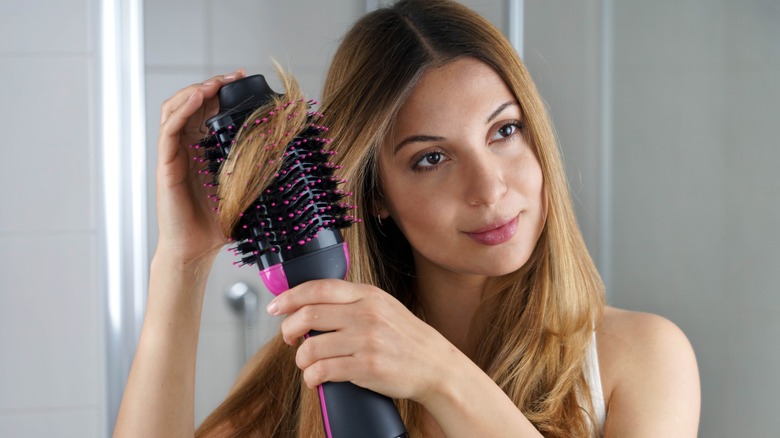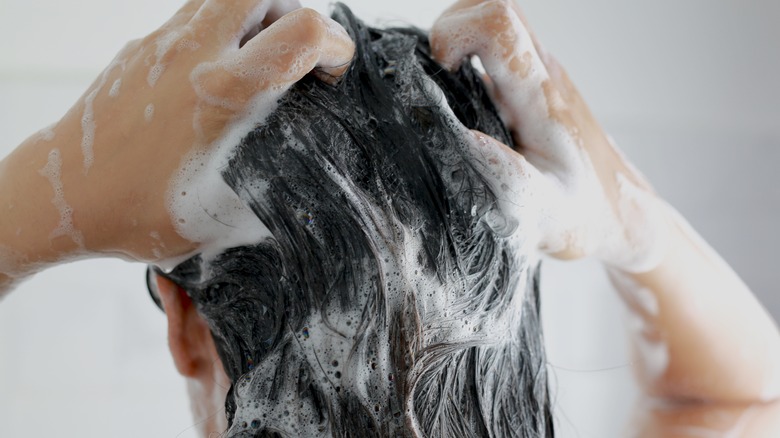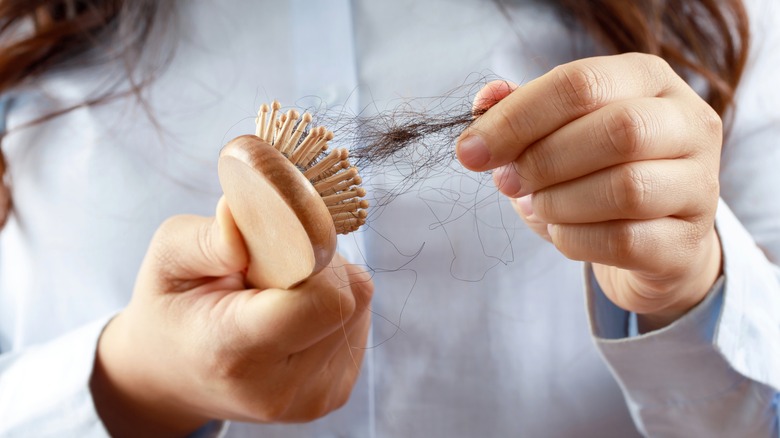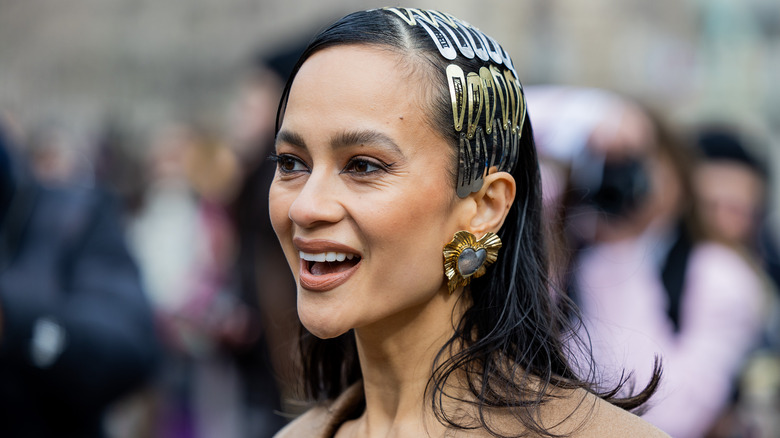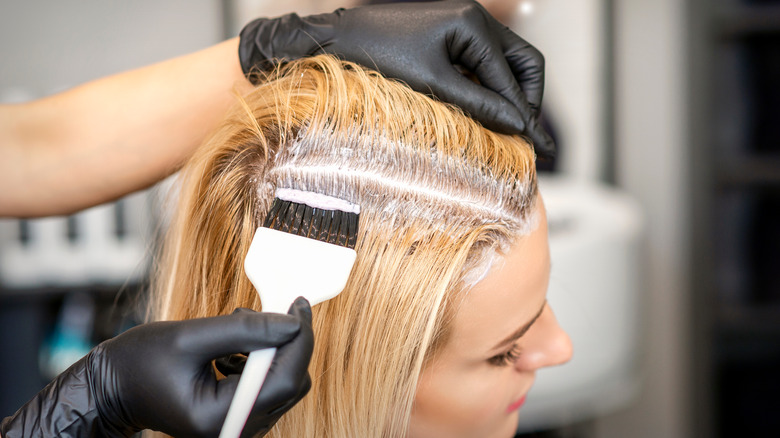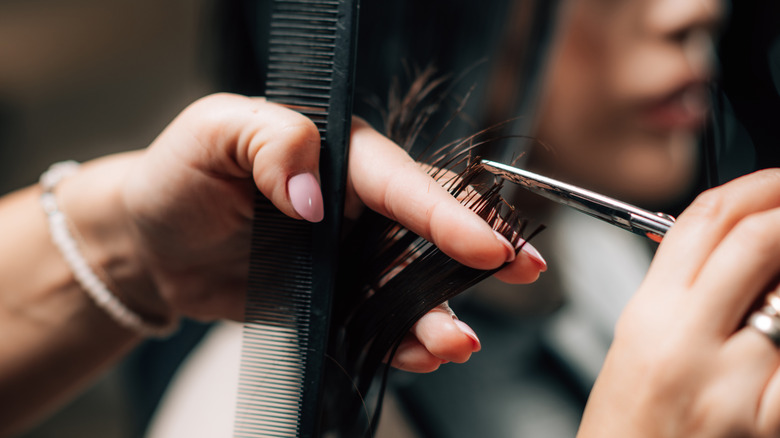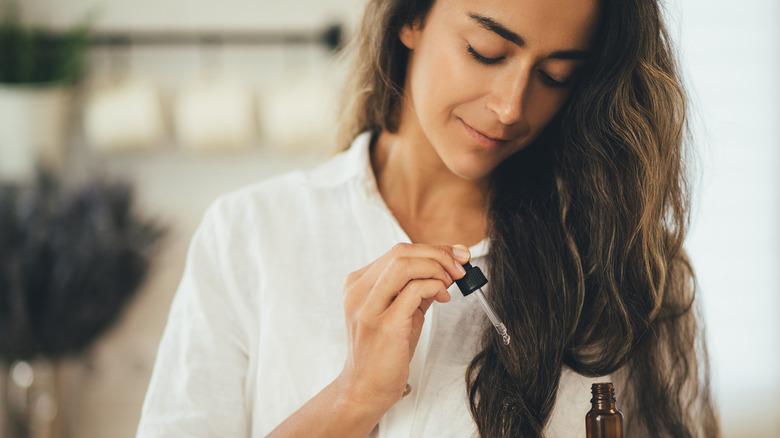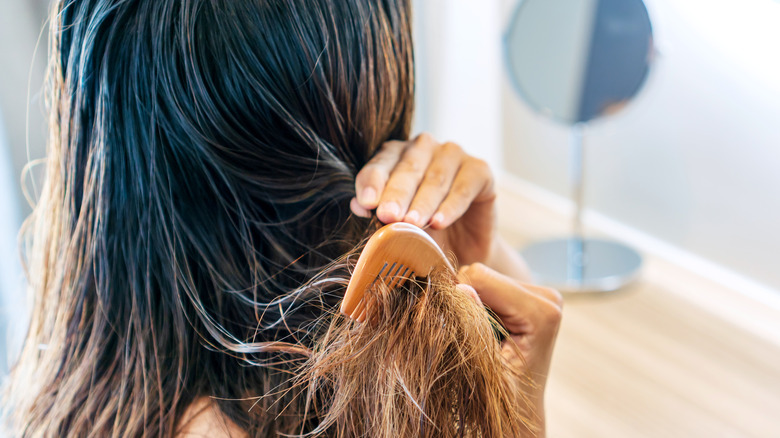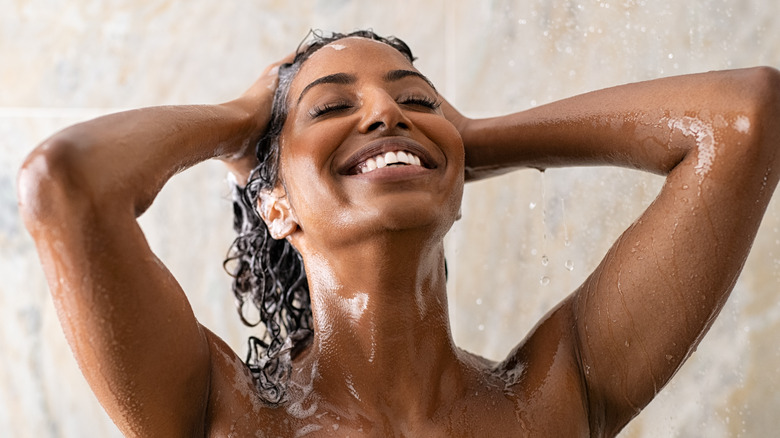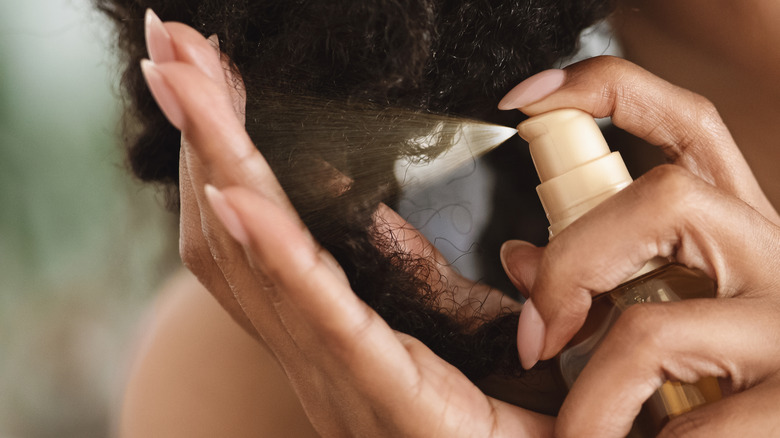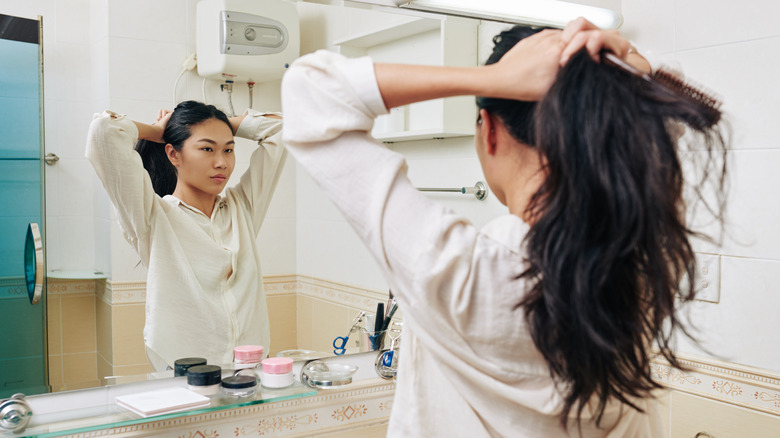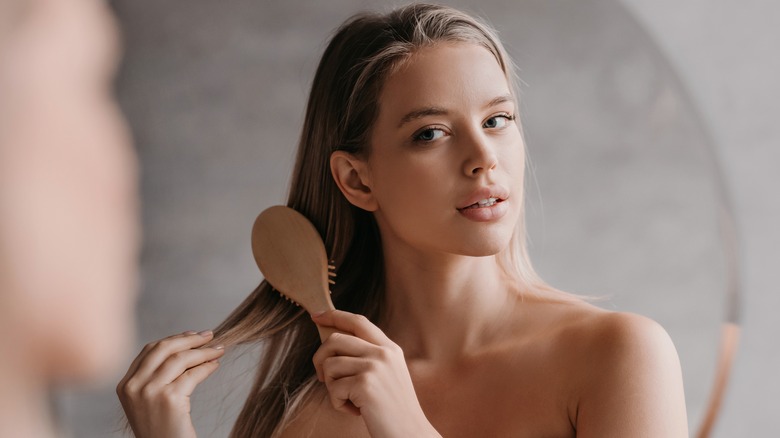Bad News: You May Be Making Your Split Ends Even Worse With These 15 Bad Habits
Split ends, known medically as trichoptilosis, can happen so easily and are one of the most common signs of hair damage. No one rejoices in finding a split end, and their appearance can make you feel self-conscious — but if you know what is causing them and how to prevent them, you are one step closer to banishing those damaged strands.
Split ends occur when the strand splits into two or more sections and can be caused by many different things, including using the wrong brush and hair accessories, relying too heavily on heat styling, and sleeping with wet hair.
Changing your habits and taking better care of your hair will ultimately result in fewer split ends and overall healthier, better-looking strands. Or, you can fake it until you get to the hairstylist for your next trim (or cut your split ends yourself at home) by using good-quality hair oils and treatments. Let's discuss everything you need to know about split ends and how you could be making them worse.
When it comes to split ends, heat is not your friend
Heat tools like blow dryers, straighteners, and curling irons may help you achieve a fabulous hairstyle and make it faster to dry the hair. But they also cause dryness which may result in breakage. If you must blow dry your hair, choose a setting with a lower heat to minimize the damage.
"Basically, the higher the temp, the more damage and split ends you're going to expose to your crown of glory," hairstylist Anthony Nader told Elle Australia. When using heat to dry the hair, avoid the ends, which are the most prone to damage. You may also want to spray a few spritzes of heat protectant on the strands as an extra layer of protection.
Another mistake you could be making is using heat-styling products on wet hair. "It's amazing the number of people who risk using straighteners and curlers on semi-dried hair as they are in a rush," stylist Rob Reeves told VS Sassoon. "Your hair needs to be completely dry or you will sizzle and damage the cuticles of your hair."
Clean hair is great, but over washing is never a good thing
Clean hair looks and smells great, but a bad habit you may be making is washing it too often. Overwashing your hair will remove natural oils, causing dryness. And with dryness comes the risk of those dreaded split ends. Split ends can weaken the hair and even slow hair growth.
"Some people just think that they have to wash their hair every day or they're going to get very greasy hair," dermatologist Anthony Rossi told CNN. "If they give themselves a chance, they may see that they don't actually have that greasy scalp or hair. And on the other hand, they may not be able to tolerate going too long or too infrequently because they feel that their scalp becomes very greasy."
But how often should you wash your hair? The answer will differ depending on your texture, how oily your hair is naturally, your climate (hotter weather can result in more sweat), and what treatments you had. In general, washing your hair no more than two times per week is advised. Of course, the frequency will increase if it looks oily or dirty.
Using the wrong brush causes damage
The right brush can make all the difference in preventing split ends before they form. "If you are using a brush with rough bristles right out of the shower, your hair is going to break," celebrity hairstylist Laura Polko told InStyle. The best brush for the job is often a wide-tooth comb or a brush with flexible bristles.
But how you approach brushing your hair will also impact the outcome. You can have the best brush on the market, but putting it to use can make or (literally) break the strands. It turns out, brushing from top to bottom could result in more knots and a painful detangling process. Do you do this?
If so, it is time to change this bad habit for good. "You're forcing the tangles to compact to the bottom of the hair," founder and CEO of the International Salon Group, Lorean Cairns, told The Healthy. "It's still tangled and gets worse." Instead, it's recommended to start at the ends and work your way up.
Metal accessories result in more breakage than you realize
When choosing hair accessories, we are spoiled for choice because countless products are on the market. However, not all accessories are equal, and some are much worse for the hair than others.
If you want to prevent damage, which could lead to split ends, it may be time to ditch your hair ties, rubber bands, and metal clips. "The metal pieces can snag and break your hair, causing split ends, broken pieces, and uneven strands," professional hairstylist Arsen Gurgov told Byrdie.
You could be doing everything else right, only for a poor choice in clips to counteract that goodness. When you want to tie it up, the best option for your hair would be to use pieces with a fabric outer, especially ones made from silk. This will result in less potential damage to your strands and the scalp.
It's time to say no to bleach
If you have naturally dark hair and want to change it so it becomes dramatically lighter, or you have been waiting to try a new and exciting color like pink, a popular method for achieving this is often through bleach.
Although hairdressers will work hard to minimize the damage that the bleaching process causes, it is well-known that this can be bad for your hair because of the harsh chemicals which cause damage and dryness. It may be time to say "no" to bleach to reduce the chances of getting split ends, especially if you opt for this treatment often.
"If you're coloring your hair and bleach is one of your 'mane' contenders, ask your hairdresser what's the next best ingredient they can use that's less drying," Anthony Nader told Elle Australia. "Bleach, over time, can dry out your strands, especially if it's dragged all the way down to those poor fragile ends."
You're waiting too long before getting a trim
Could your split ends be a result of not getting trims frequently enough? Depending on the expert you ask, there are various recommendations as to when to trim your hair, but the consensus is to cut your hair every three to four months for the best results. For shorter hair, this may need to happen sooner, and you'll need a cut every four to six weeks, while those with long hair may extend their cut by a few more weeks.
Hair is believed to grow around six inches annually, although this can differ from person to person. The problem with not getting regular trims is it could cause hair breakage and split ends. This is especially true for those with long hair, as professional hairstylist Arsen Gurgov explained to Byrdie. "The longer the hair, the more prone it is to split ends, making it that much more important to keep up with your regular trims," Gurgov revealed.
All that time in the sun is causing damage
As wonderful as it is to be outdoors and enjoying the sunshine (especially after a long winter), if you do not take the proper precautions to protect your scalp and hair, this could be causing more harm than you even realize. Exposure to UVA and UVB rays on your hair results in dryness and damage, increasing the chances of you getting split ends.
"Hair doesn't actually burn in the sun, but excessive exposure to UVA and UVB rays results in oxidative stress, which causes structural damage to the hair by breaking down proteins, rendering the hair more brittle and prone to breakage and split ends, dermatologist and hair specialist Dr. Sharon Wong told Stylist. "UV rays also bleach out the pigment/melanin that gives the hair its color."
The solution is less exposure to these harmful rays, but you can also counteract their effect using accessories like a hat and an SPF product.
Why aren't you using sealants on your split ends?
You can also do several things beforehand to minimize the chances of getting split ends. But unfortunately, you cannot repair split ends once they form. "I don't like to be the bearer of bad news, but I am also not going to sugarcoat the inevitable. When your strands split, they can never repair to be singular again — ever!" Hairstylist Anthony Nader told Elle Australia. "You can [however] 'mask' a split end, by all means, to feel and appear more smooth until you can get back to your hairstylist ..."
When you have split ends, the solution is to get a trim to remove them. But what if you don't have the time to visit the hair salon? Or perhaps you're saving up before you go so that you can try out a new look. The good news is that there are some sealant products on the market that boast exceptional results, including reducing breakage and the appearance of split ends. This could be the temporary solution you have been looking for before you can make an appointment with your hairdresser again.
Stop brushing your hair when it's wet
You may be tempted to brush your hair as soon as you wash it. This is a bad habit that many of us make without realizing the effects it's having on our strands and the potential damage that it's causing. "Wet hair will become bendy and stretchy because the elasticity has changed, and it will just snap," Lorean Cairns told The Healthy.
The best thing you can do for your strands is wait until your hair is dry before brushing it, as it will be less fragile and, therefore, not as prone to damage. While there are tools on the market that are meant to be used on wet hair, hairstylist Rob Reeves says it really should be avoided at all costs.
"Whatever you do, do not brush your hair when it's wet because that's when it's at its weakest and becomes vulnerable to breakage (leading to flyaways), split ends, and damage," Reeves told VS Sassoon. If you must brush your hair when it's wet, do so slowly and use a wide-toothed comb for minimal damage.
A hot shower may feel amazing, but it's bad for your hair
Few things feel better than a hot shower after a long hard day. Hot showers are great for helping to relax the muscles and joints and are believed to have cardiovascular health benefits. But the heat is not doing your hair any good.
"When showering, try to use lukewarm water or the coldest water you can stand," hairstylist Arsen Gurgov told Byrdie. "Hot water is damaging to your hair since the cuticle swells, making it more prone to splits."
Hot water can remove the natural oils from the hair, resulting in dry and fragile ends. And it's not just the hair at risk, but also the scalp, with frequent hot showers potentially causing inflammation. So, next time you turn the water to the highest setting, consider your hair health and save those extra-hot showers for the days you won't be washing your locks.
You're not investing in good hair oils
Even if you have done your best to ensure your hair remains healthy and appears glossy, it could need a little extra help, which can be achieved with oils. Using hair oils is a great way to get your strands into better condition and will reduce the likelihood of breakage and split ends. There are different oils to choose from, depending on what issue you intend to use them for. For example, coconut oil is great for dry and damaged hair, and castor oil is fantastic for hair that lacks volume or appears dull.
"Similar to skin, we need oil to have healthy, strong hair," hairstylist Jasmine Merinsky told HuffPost. "Oil lubricates the outer cuticle and strengthens the inner core by providing moisture to help keep the bonds strong." Hair oils can restore natural oil supplies and are incredibly easy to use, making them a popular option. Multiple products are available, but argan oils are often recommended for hydration and to disguise the appearance of split ends.
Say no to always wearing your hair up
Running around doing errands and working out often requires wearing your hair up because it is practical. However, always opting for this hairstyle is not doing your hair any favors and can cause tension at the scalp and result in breakage and split ends. Wearing your hair down, at least for some of the time, is much better than pulling it into high ponytails and buns.
Another important point to consider is how to style your hair when you sleep. Do you think putting it into a bun is the right way? Or do you leave it loose? The answer is surprising and depends on your hair length. Wearing it down for short hair is best, but the opposite is true for long hair.
"Never go to bed without tying your hair up (for long hair), as loose hair can tangle. Removing tangles later can cause breakage," celebrity hairstylist Fallon Toni Chavez told Byrdie. Just remember to reach for a silk scrunchie, and don't tie it too tight!
You're not taking your time when brushing your hair
We get it: Sometimes, one of the least enjoyable parts about maintaining gorgeous hair is brushing it, especially if you have a texture prone to tangles and knots. Not only is this uncomfortable, but it is also incredibly time-consuming, so wanting to get it over with as fast as possible so you can return to more enjoyable activities is understandable. But it's also a hair mistake.
Instead of rushing the process of brushing your hair, slow down, be gentle, and take your time. "Stop brushing your hair like you're chopping wood," celebrity hairstylist Cash Lawless told Cosmopolitan. "Hair is fragile, so treat it delicately." This means that when brushing your strands, you should not hear loud noises that could indicate the hair's ripping. So, the next time you brush your hair, invest in a good-quality brush, and don't be in a rush. It could really make all the difference.
Sleeping with wet hair is a big no-no
Unless you have top-quality silk pillowcases, it is recommended not to sleep when your hair is wet. As previously mentioned, the hair is more fragile and prone to damage when wet. Sleeping with wet hair can have varying results depending on the texture — and those with curly locks can expect to wake up with unwanted frizz.
"Just like the old saying 'never go to sleep on an argument,' you should never go to sleep on your wet hair," stylist Rob Reeves told VS Sassoon. "Even if you have obedient straight hair that doesn't kink, you are still likely to end up with knots, and it can be damaging to your hair."
The solution is to dry your hair first, which may require you to blow dry the hair using a cool heat setting or shower earlier in the day so there is time for your hair to air dry. This is one of the easiest ways to prevent damage, so it's best never to skip this step.
You're not eating enough protein
What you eat is essential because lacking certain things in our diet leads to deficiencies. This affects how your body works but will also impact your hair health. Eating a balanced diet with enough protein sources, such as chicken and eggs, will keep your hair in good condition. And when it's strong, split ends are less likely to form. Other beneficial supplements are omega-3s and iron.
It's not just what you eat, though, because a good hair protein treatment can also make a difference. It's a great way to help nourish your hair and strengthen the strands, and they can be done at your local hair salon or home (consulting a professional for the first time is always advisable). But remember not to do the treatments often, as this will have the opposite effect and result in breakage. It's recommended to use protein treatments every six weeks for shiny, strong strands.

